Pietà with the Virgin Mary, an Angel, and Nicodemus
Artist: To be determined
Date: XVIII century
Classification: Painting
Dimensions: 170 x 130 cm
Materials: Oil on wood panel
Adopted By: The Canada Chapter
Total Cost: € 90,000
Description
The panel was registered in 1935 in the inventory of the Pinacoteca with the generic attribution to “Florentine school, XVI century”. The unique quality of the painting and its silent drama presents a striking affinity with the Pietàs painted or sculpted in Florence around the middle of the XVI century by masters such as Agnolo Bronzino and Baccio Bandinelli. Bronzino’s Pietà in the Musée des Beaux-Arts et d’Archéologie de Besançon was painted in 1545 for the chapel of Eleonora di Toledo in Palazzo Vecchio. The Pietàs by Bandinelli are in the crypt of the Santa Croce Basilica and in the Pazzi Chapel of the Santissima Annunziata Basilica, which were executed respectively between 1546 and 1552 for the high altar of the cathedral of Santa Maria del Fiore. The comparison with some drawings and a passage from Vasari’s Lives of the Artists could support the panel’s attribution to a great master of Florentine Mannerism. The restoration of this work could confirm and open new discoveries on Italian art of the late Renaissance.
State of Preservation
The panel’s wood presents fractures and fissures on the entire surface causing flaking of painted layers and loss of colors.
Restoration Procedures
The work needs both an anoxic and a brush treatment using suitable permethrin-based products. Restorers propose to remove the parquetry and restore the support. The artwork will be provided with a containment system to prevent the movement of the wood and alleviate the weight of the work on the support. Lastly, a protection treatment with virgin beeswax will be performed.
Detail
Inventory N°: 40630
Artist: To be determined
Date: XVIII century
Dimensions: 170 x 130 cm
Materials: Oil on wood panel
Department:
XV-XVI Century ArtCurators:
Dr. Fabrizio Biferalimuseum:
PinacotecaLaboratories:
Painting & WoodWishbook year: 2021
Total Cost
€ 90,000
Pietà with the Virgin Mary, an Angel, and Nicodemus - Final Restoration Report

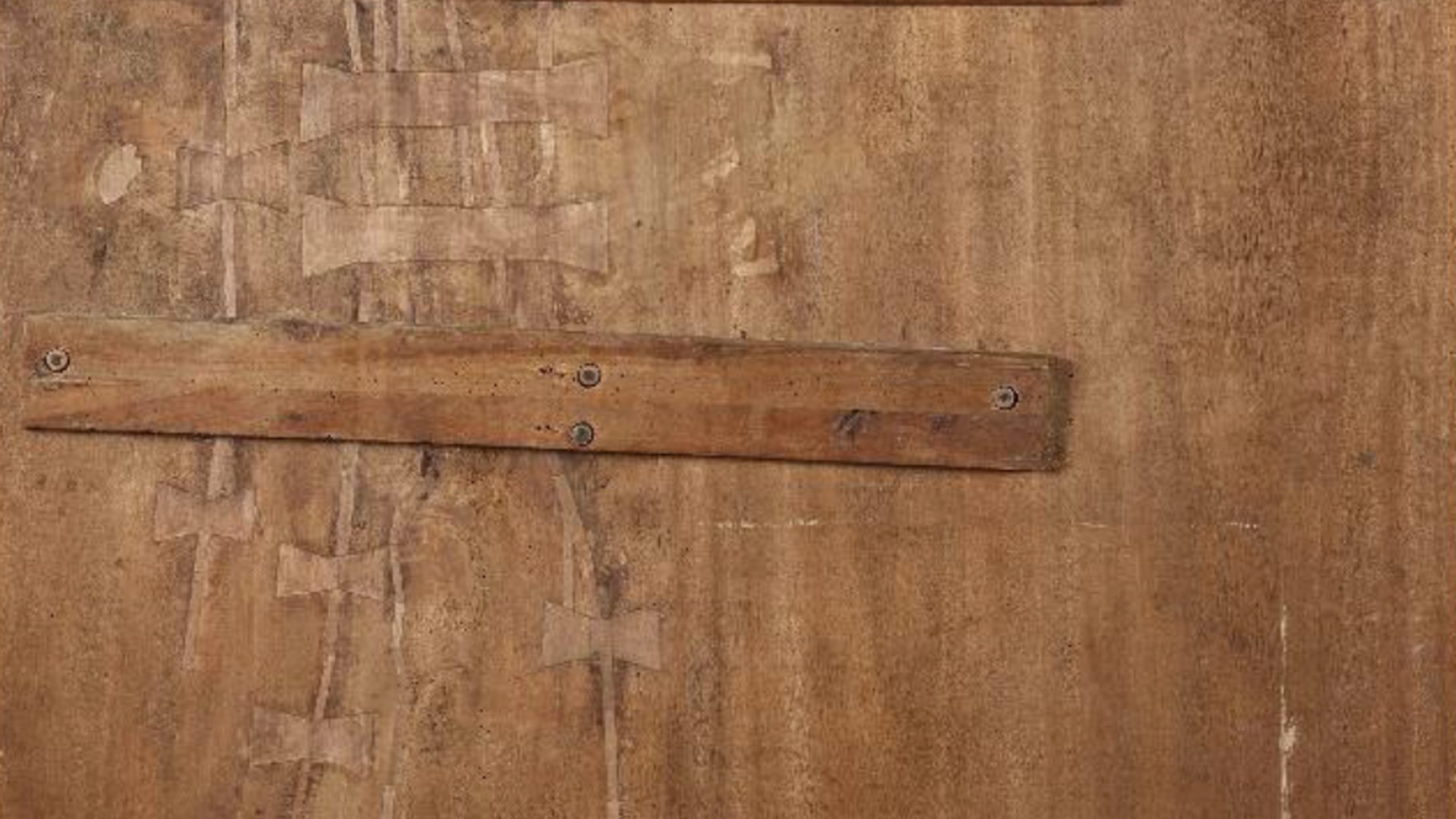

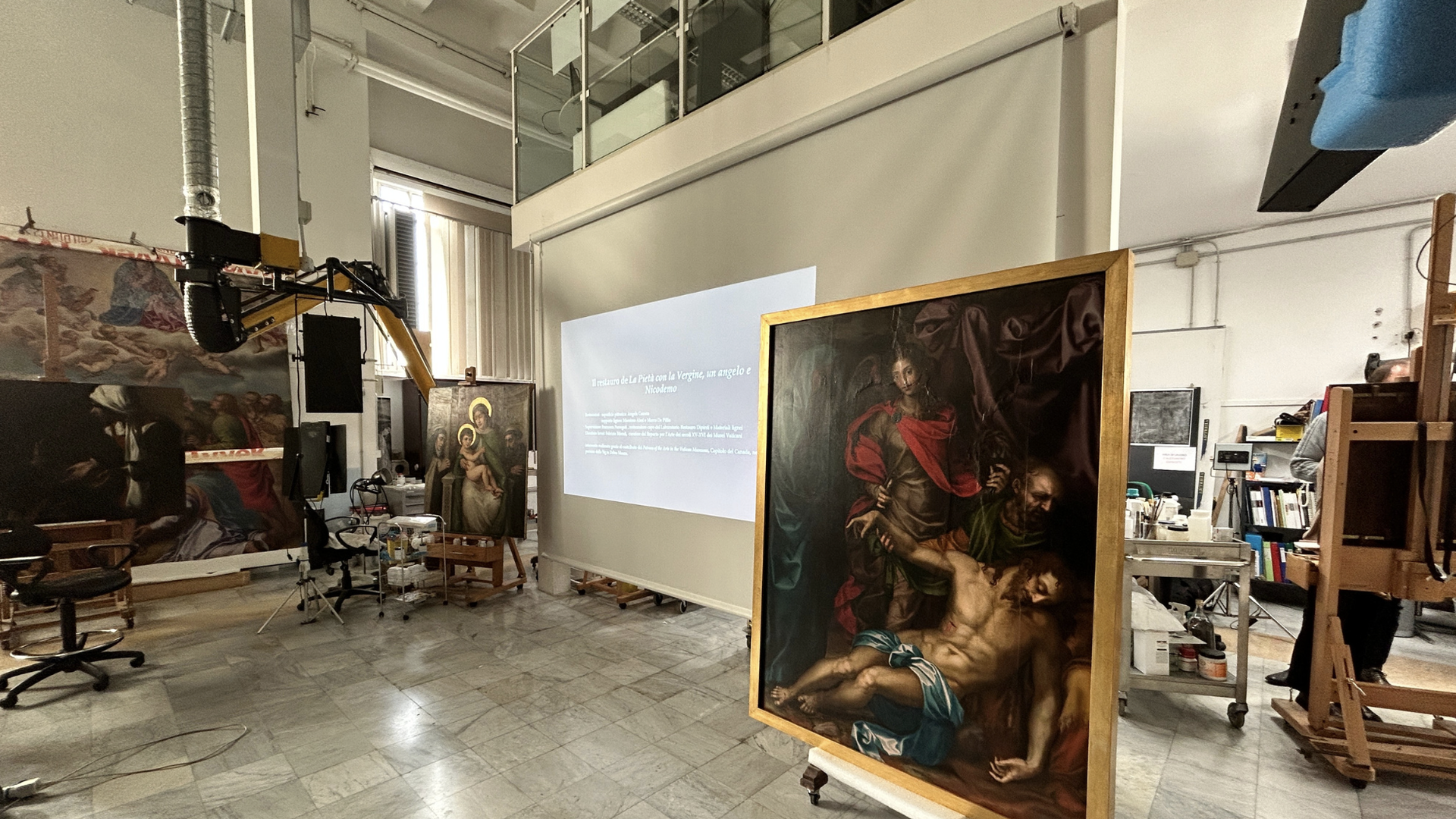
After the intervention on the wooden support, the restorer removed the glazing of the painting to proceed with the filling of the gaps.
The restorer reduced some gaps during the intervention on the support and plastered it without difficulty. Several fractures, on the other hand, were restored while maintaining the original planes of each affected side.
The restorer performed the reintegration with a criterion that allows identification of the conservation history of the work. The restorer reintegrated the plastered gaps by hatching in watercolor to enable recognition of the restored areas. The abrasions, instead, were treated by glazing first with watercolor, then with paint colors. Some remakes that are still valid, such as the fingers of the angel's right hand, or some pieces of the background drapery, have been preserved and matched with the surrounding surface
The final coating, applied by misting, was calibrated to avoid excessive light refraction that could highlight surface irregularities.
Old sources mention a gilded frame applied in the eighteenth century to replace the lost original, probably made for the display at Castel Gandolfo. Since the search in the Vatican deposits did not produce the desired results, a new one was created, respecting the documented characteristics.
It may date back to its placement in the frame prepared in the 18th century when the sides of the painting were resected, probably to regularize its shape. On the right side, the trimming is partial. In fact, on the upper third, it's possible to see the typical drips of the original plaster and glue preparation properly laid with the painting horizontally, while the left side shows a complete cut, evidenced by the dissected xylophagous insect galleries. The sections of the short sides have retained their original surfaces.
Pietà with the Virgin Mary, an Angel, and Nicodemus - Second Restoration Update
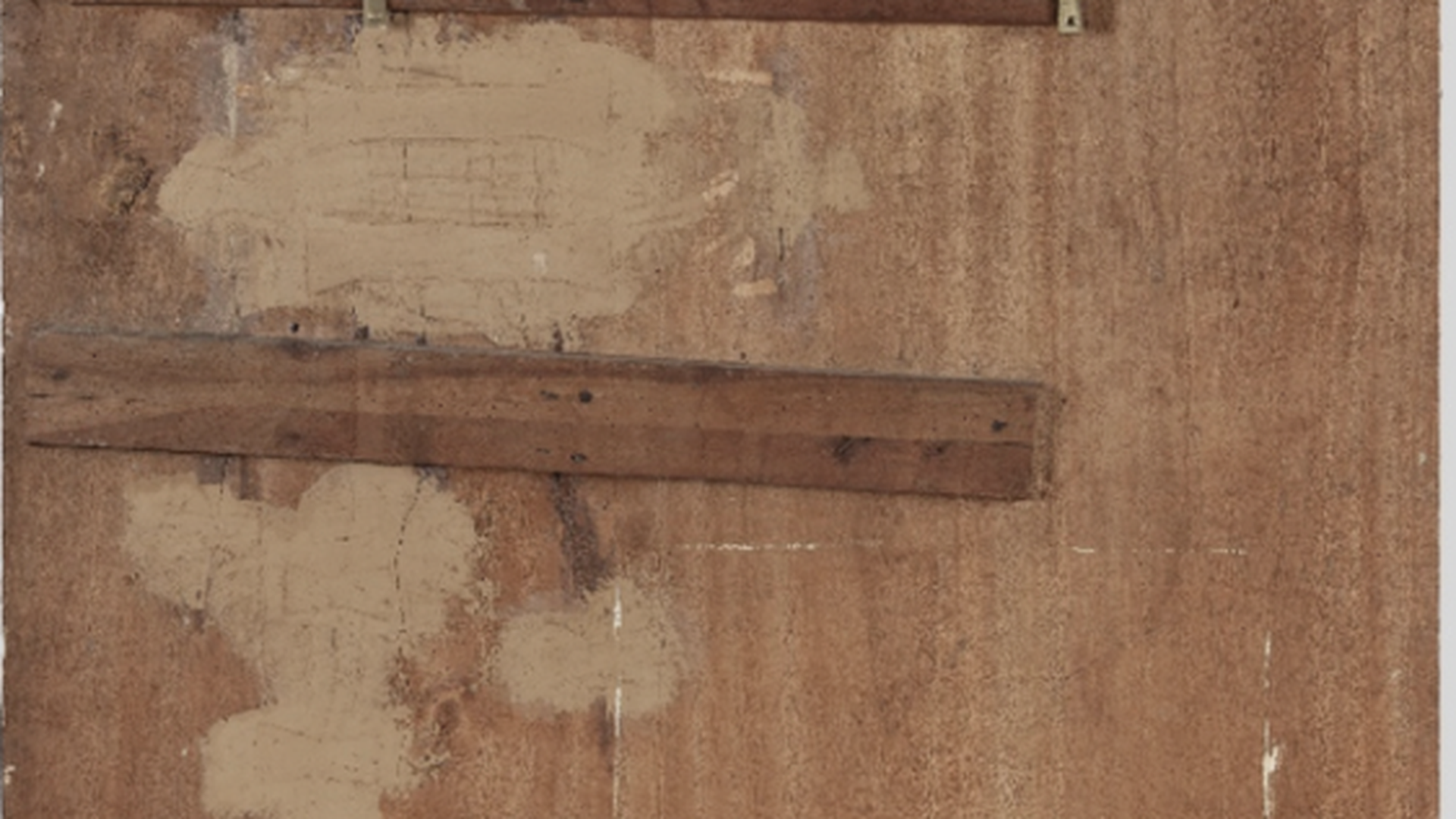
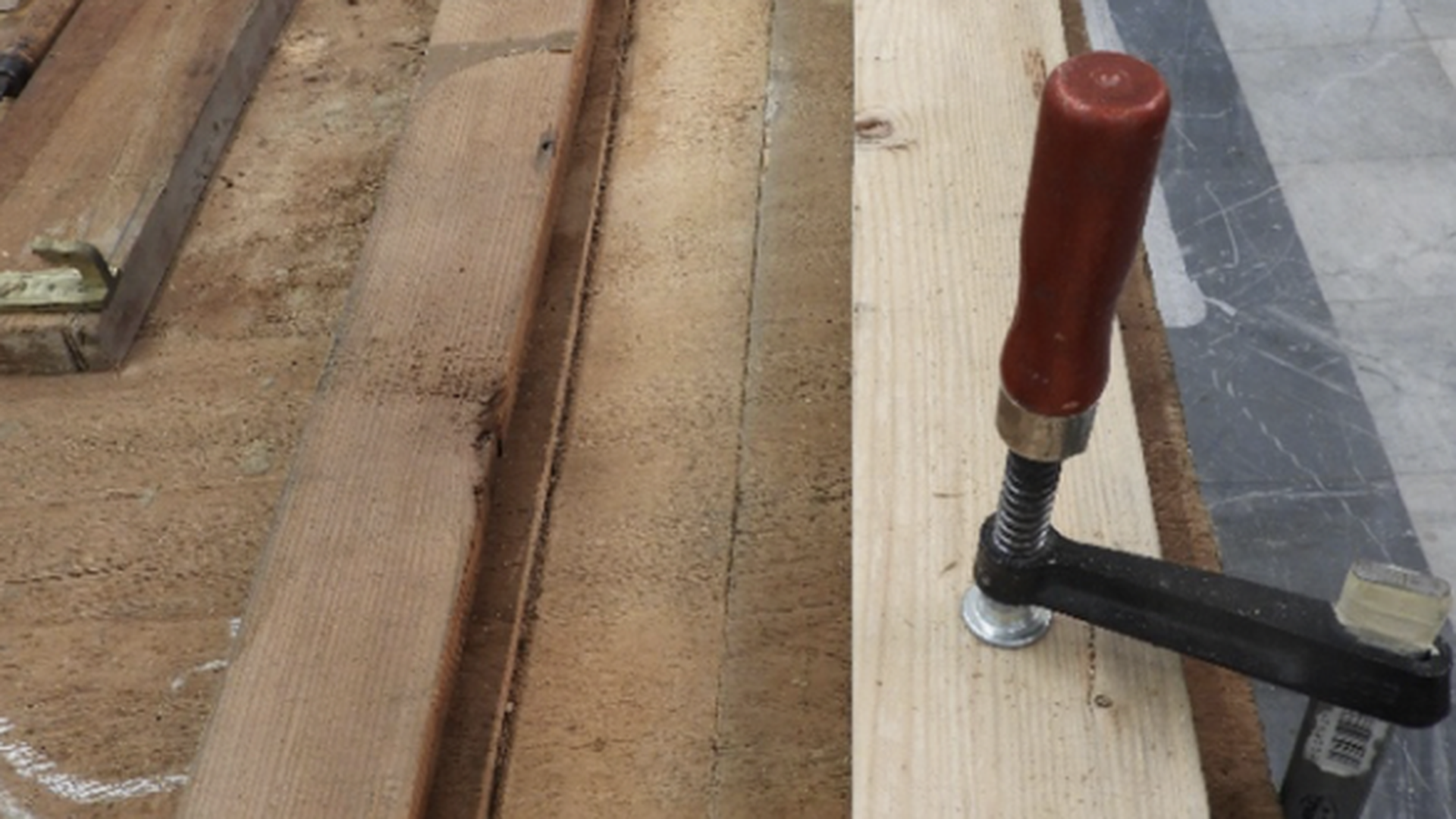
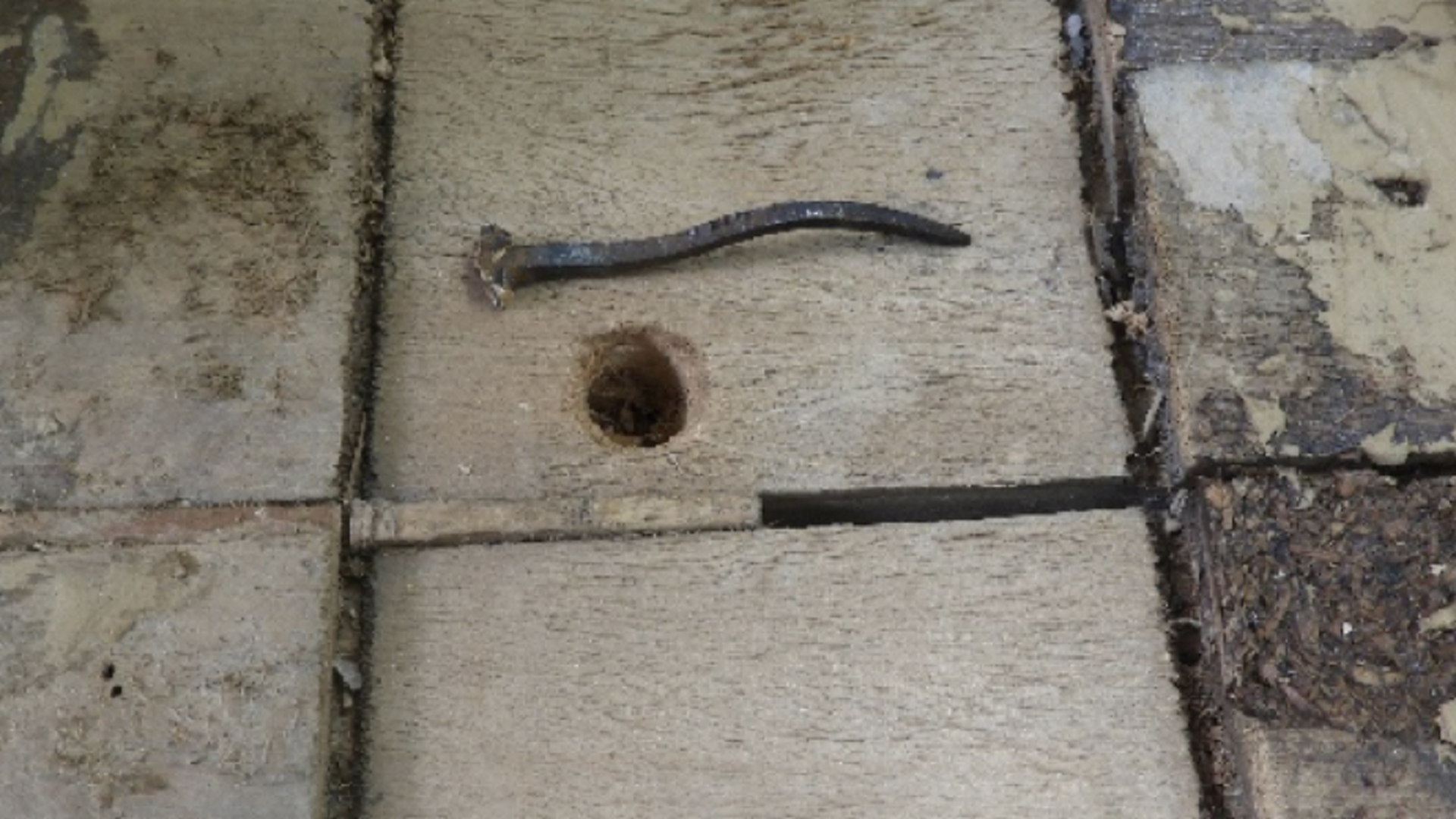
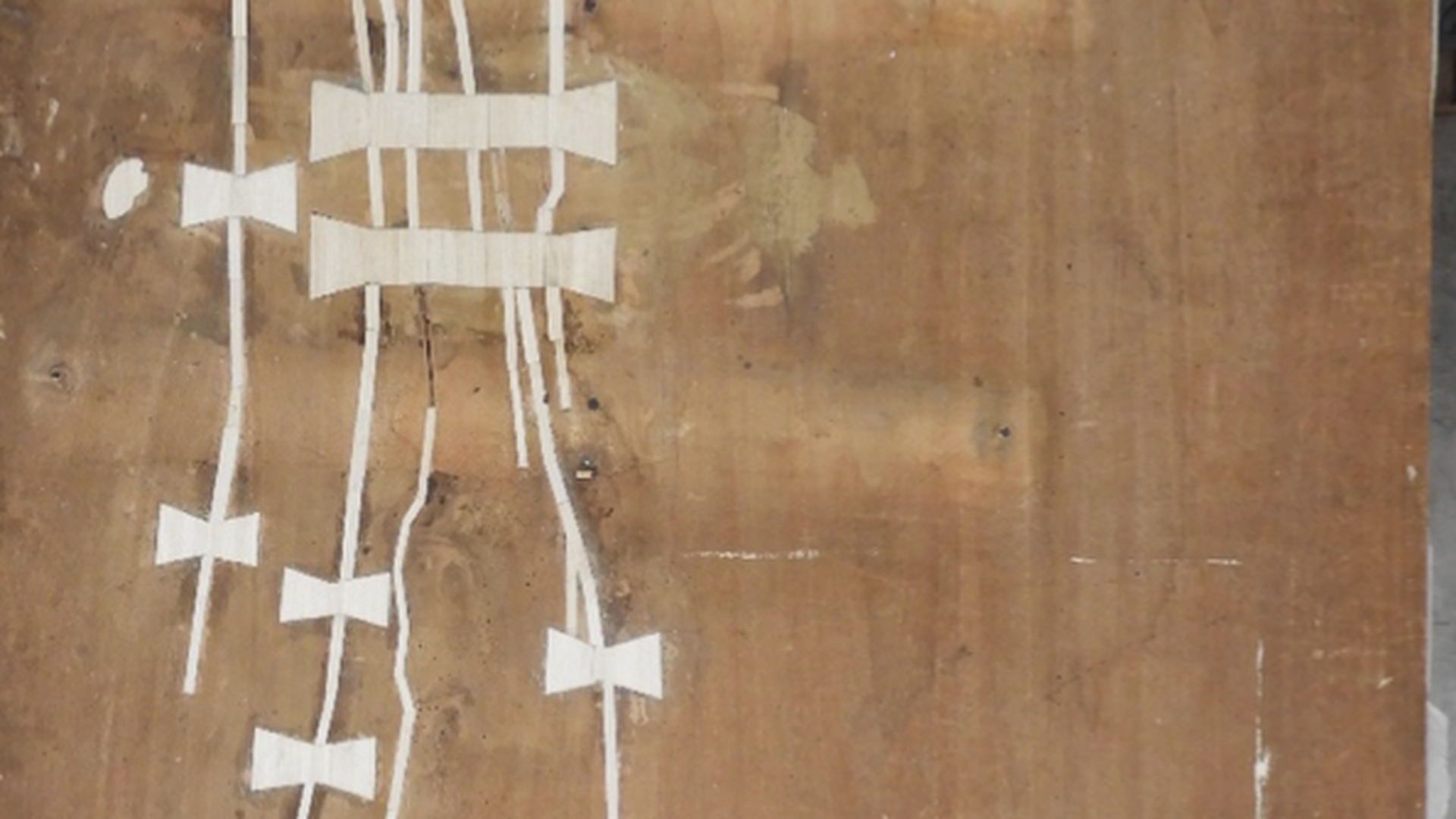
The pictorial board consists of four poplar wood planks with vertically running fibers, joined together by ranks inserted in the thickness and locked with four orthogonal pins.
The board has a dual containment system: at the top and bottom are two dovetailed spruce-wood crosspieces with a trapezoidal cross-section; on the other hand, in the central area of the painting, two poplar-wood crosspieces have been placed.
The latter containment system, probably previously shortened, currently acts only on the first three planks of the panel, leaving free the one furthest to the right (looking at the back of the painting).
Following a preventive anoxic woodworm treatment, the restoration intervention began removing the two dovetailed fir crossbeams. This operation preserved all the elements of the artwork, leaving the preparatory and pictorial layers in complete safety. Next, the layers of glue and sawdust, and stucco present, previously softened with water-based gel packs, were mechanically removed from the surface.
In the areas affected by cracks entirely through the thickness of the panel, characterized by clearly visible unevenness on the front, a delicate phase of realigning the pictorial surface followed, where permitted, acting from the back with a system of levers and constantly monitoring the movements on the front of the work; when the unevennesses have been zeroed or at least reduced to lock the board in its new position, Balsite® epoxy resin was inserted inside the cracks, proceeding with the gluing of wedge-shaped wooden inserts, of the same wood species and orientation as the wooden fibers of the support, thus reconstituting its unity and guaranteeing its movements. Restoration then extended to all cracks, knots, and gaps present.
The intention to conserve the constituent elements currently present, whether authentic or the result of later interventions now historicized, led to the design of an intervention to preserve the two containment systems, but at the same time re-functionalize them based on the conservation needs of the work. The containment system was strengthened by reinforcing the entire length of the channels with poplar corner inserts, which would reduce the risk of future cracking of the original wood caused by the possible contrast between the crossbeams and the movements of the support; in addition, the fir crossbeams themselves were stiffened by gluing multiple beech strips underneath, constituting the sliding portion in the seats.
In contrast, the core restraint system has been made more flexible, will fit concealed into the thickness of the crossbeams, and will have the dual function of constraining them to the artwork and more elastically contrasting the movements of the wood.
Restorers: Massimo Alesi, Marco De Pillis and intern Vincenzo Amato.
Pietà with the Virgin Mary, an Angel, and Nicodemus - Restoration Update
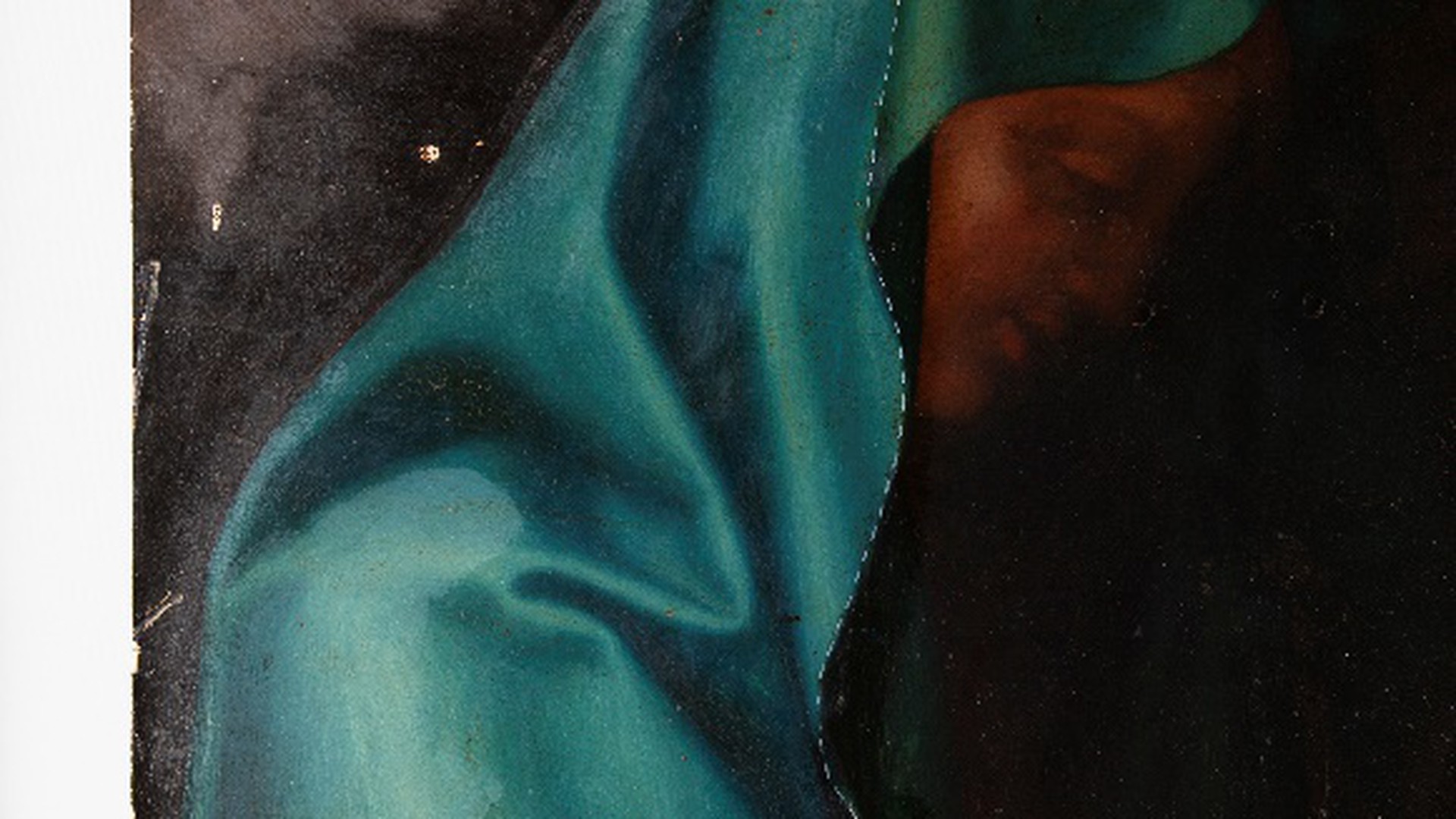
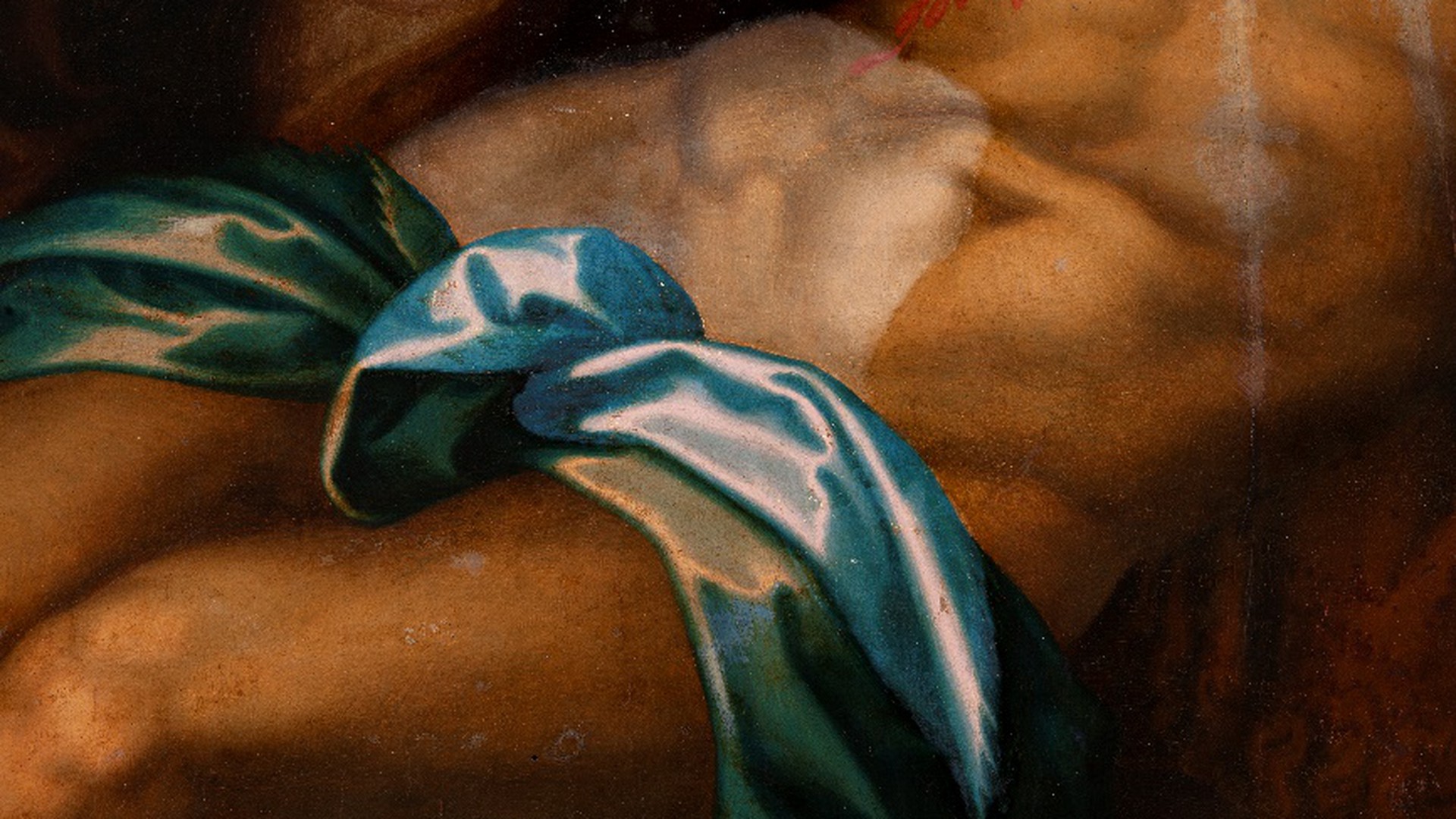
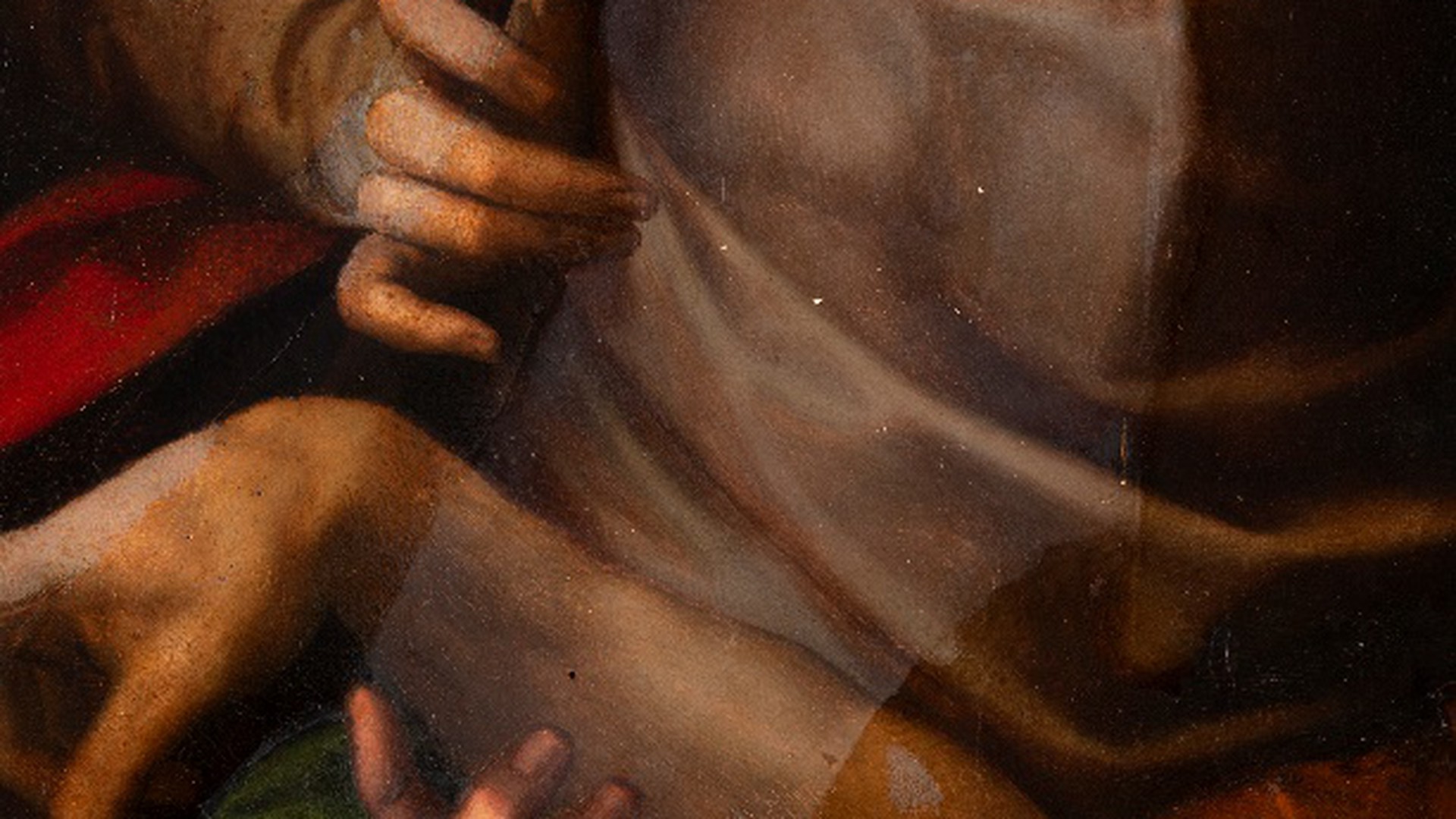
Executed Technique:
The panel consists of four poplar wood planks with vertical fibers. They are together with interlocking elements. There is a double system of crossbeams, some sliding and fixed, on the back. The oil painting technique is on a traditional chalk and glue preparation.
State of Preservation and Past Interventions:
The wood planks are in poor conservation condition. There are cracks, and plank deformation, which created unevenness in the preparatory and pictorial layers. Degradation factors contributed to this destruction. First, the constituent material appears to be of poor quality, given the numerous irregularities and knots, mainly located in the central area. In addition, the painting has two restraint systems that need to be adjusted.
The previous restoration work on the support had additional stiffness that conflicted with the natural movement of the wood. The initial width of the panel underwent a reduction on the entire right side and the lower part of the left side.
Previous restorations are also clearly evident on the surface. There were heavily oxidized and tenacious reintegrations and repainting under and over the varnish. The fillings, with the intention of smoothing out the unevenness created by the support, extended far beyond the underlying gaps.
Restoration Intervention:
Following a preventive anoxic biocide treatment, restorers cleaned the paint film. After removing the yellowed varnish with solvents, there were numerous tenacious repaintings, especially in the shaded parts. With the help of basic substances, restorers removed the invasive fillings. Also, the freed surface from foreign elements made it possible to clearly read the actual levels and damages created by the movement of the support. The double glaze of Japanese paper protected the front, which allowed the restorers to facilitate the intervention on the back.
On the support, restorers removed the two fir crosspieces in the upper part without affecting the pictorial surface. Next, they mechanically removed the layers of glue, sawdust, and stucco present, previously softened with the help of water-based gel packs. In addition, the restorers extracted the constraints constituted by the "butterflies" and inserts of previous workings to partially free the planking and allow a gradual realignment of the pictorial surface.
The intervention then continued with the remediation of the cracks by inserting wedges of the same original wood species, which ensured equal movements to those of the support. The restorers are considering the application of a suitable elastic restraint system.

Pietà with the Virgin Mary, an Angel, and Nicodemus
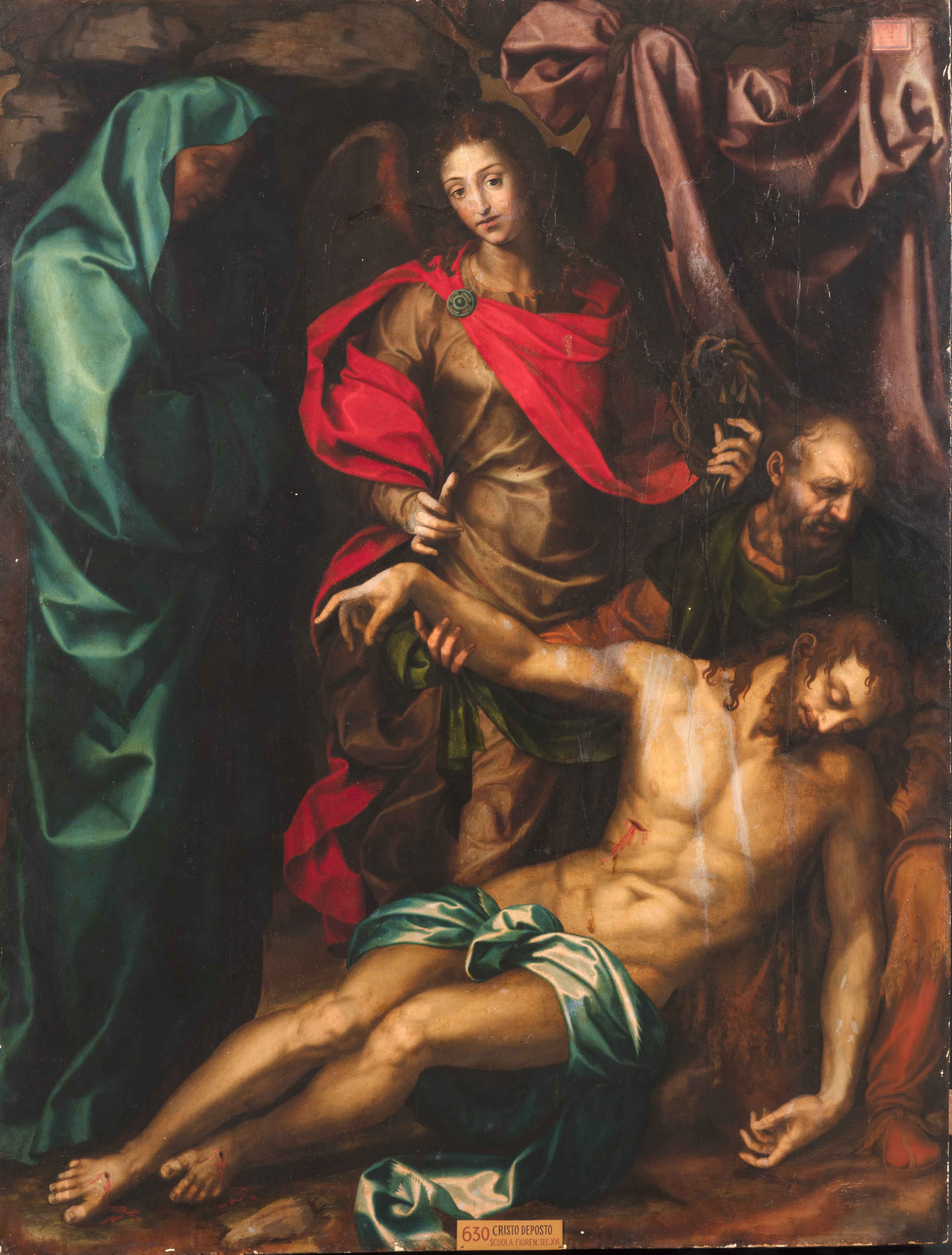
Details
Adopted by: The Canada Chapter
Patrons: Tom and Debra Mauro
Inventory: 40630
Artist: To be determined
Date: XVIII century
Classification: Painting
Materials: Oil on wood panel
Dimensions: 170 x 130 cm
Museum: Pinacoteca
Department: XV-XVI Century Art
Laboratory: Painting & Wood
Wishbook year: 2021
Description
The panel was registered in 1935 in the inventory of the Pinacoteca with the generic attribution to “Florentine school, XVI century”. The unique quality of the painting and its silent drama presents a striking affinity with the Pietàs painted or sculpted in Florence around the middle of the XVI century by masters such as Agnolo Bronzino and Baccio Bandinelli. Bronzino’s Pietà in the Musée des Beaux-Arts et d’Archéologie de Besançon was painted in 1545 for the chapel of Eleonora di Toledo in Palazzo Vecchio. The Pietàs by Bandinelli are in the crypt of the Santa Croce Basilica and in the Pazzi Chapel of the Santissima Annunziata Basilica, which were executed respectively between 1546 and 1552 for the high altar of the cathedral of Santa Maria del Fiore. The comparison with some drawings and a passage from Vasari’s Lives of the Artists could support the panel’s attribution to a great master of Florentine Mannerism. The restoration of this work could confirm and open new discoveries on Italian art of the late Renaissance.
State of Preservation
The panel’s wood presents fractures and fissures on the entire surface causing flaking of painted layers and loss of colors.
Restoration Procedures
The work needs both an anoxic and a brush treatment using suitable permethrin-based products. Restorers propose to remove the parquetry and restore the support. The artwork will be provided with a containment system to prevent the movement of the wood and alleviate the weight of the work on the support. Lastly, a protection treatment with virgin beeswax will be performed.
Media
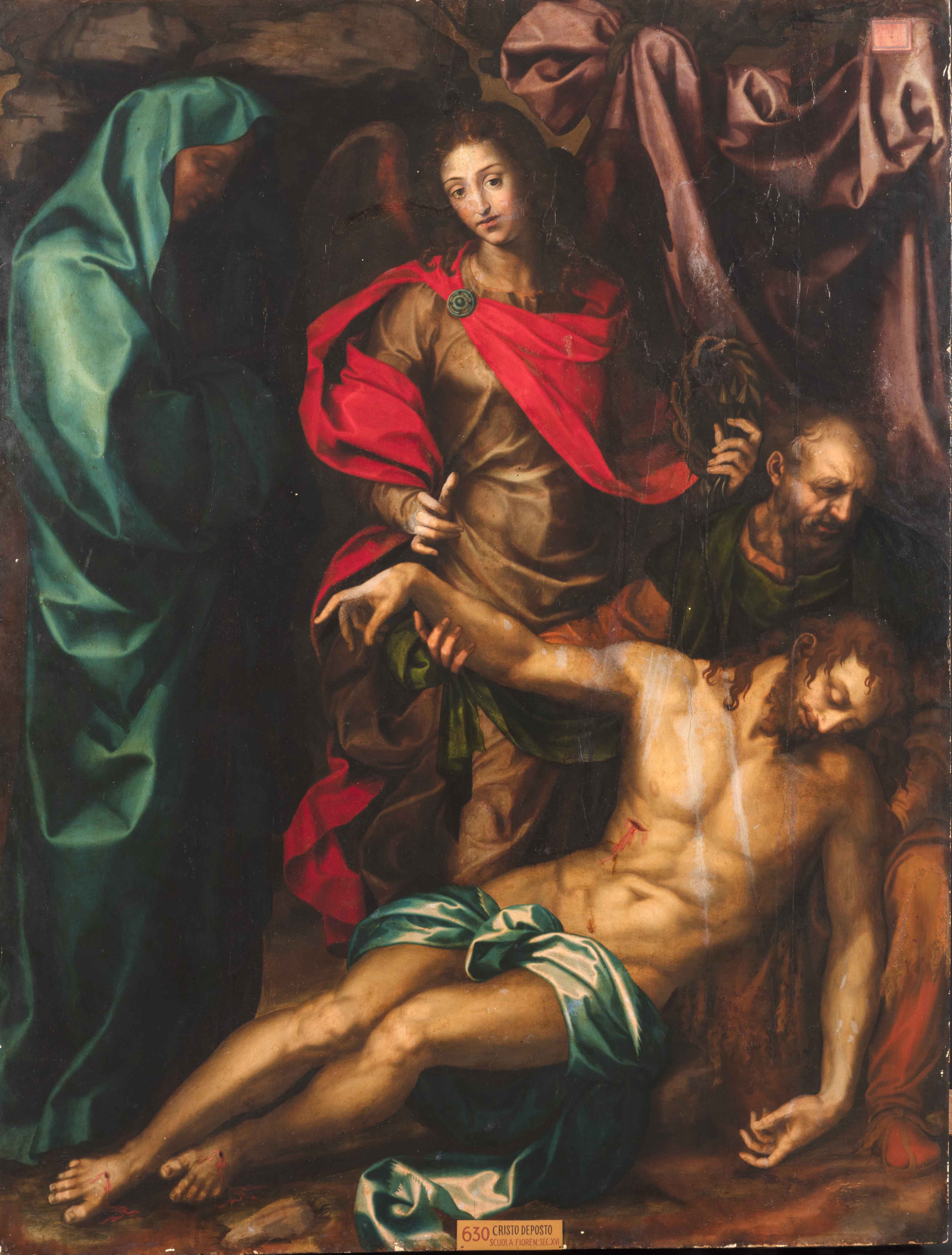
Pietà with the Virgin Mary, an Angel, and Nicodemus
Restorations Update: Pietà with the Virgin Mary, an Angel, and Nicodemus - Final Restoration Report
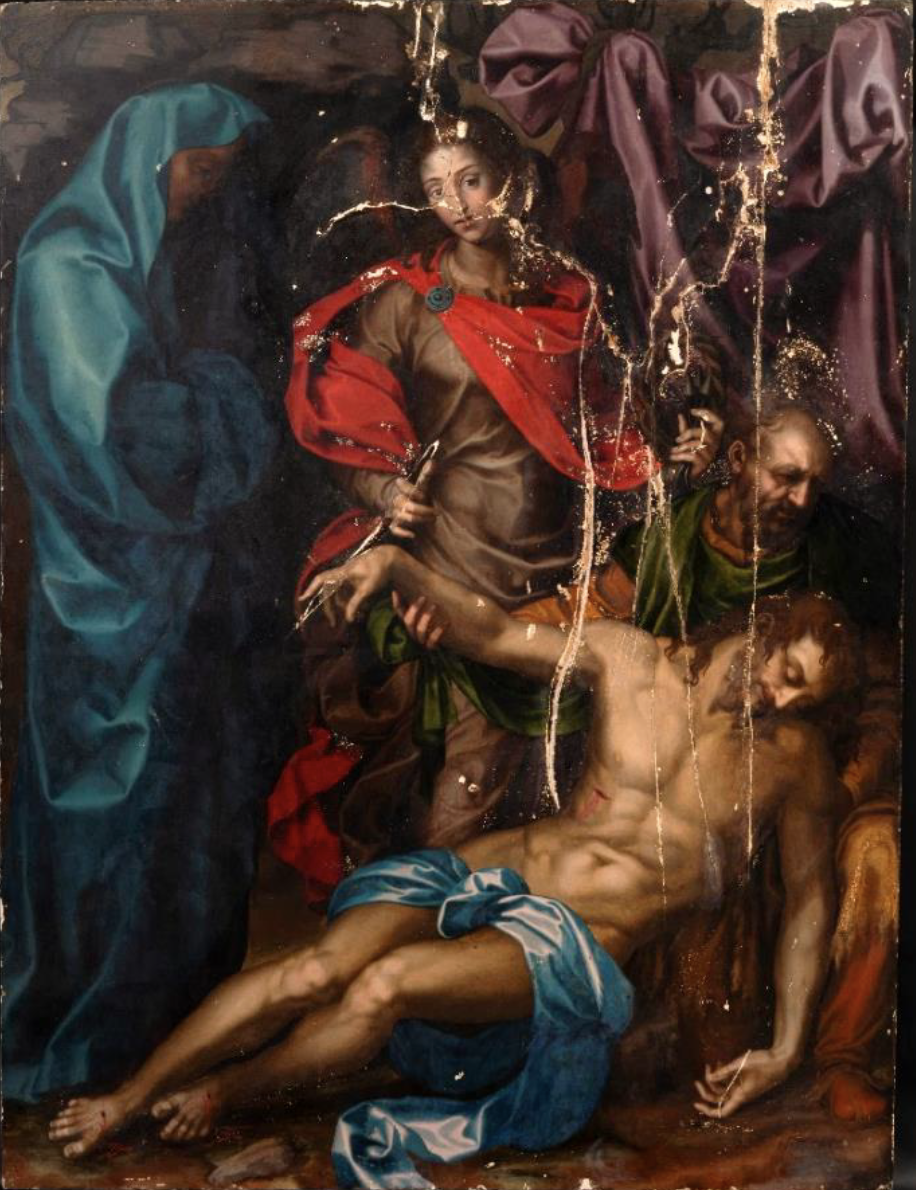
After the intervention on the wooden support, the restorer removed the glazing of the painting to proceed with the filling of the gaps.
The restorer reduced some gaps during the intervention on the support and plastered it without difficulty. Several fractures, on the other hand, were restored while maintaining the original planes of each affected side.
The restorer performed the reintegration with a criterion that allows identification of the conservation history of the work. The restorer reintegrated the plastered gaps by hatching in watercolor to enable recognition of the restored areas. The abrasions, instead, were treated by glazing first with watercolor, then with paint colors. Some remakes that are still valid, such as the fingers of the angel's right hand, or some pieces of the background drapery, have been preserved and matched with the surrounding surface
The final coating, applied by misting, was calibrated to avoid excessive light refraction that could highlight surface irregularities.
Old sources mention a gilded frame applied in the eighteenth century to replace the lost original, probably made for the display at Castel Gandolfo. Since the search in the Vatican deposits did not produce the desired results, a new one was created, respecting the documented characteristics.
It may date back to its placement in the frame prepared in the 18th century when the sides of the painting were resected, probably to regularize its shape. On the right side, the trimming is partial. In fact, on the upper third, it's possible to see the typical drips of the original plaster and glue preparation properly laid with the painting horizontally, while the left side shows a complete cut, evidenced by the dissected xylophagous insect galleries. The sections of the short sides have retained their original surfaces.
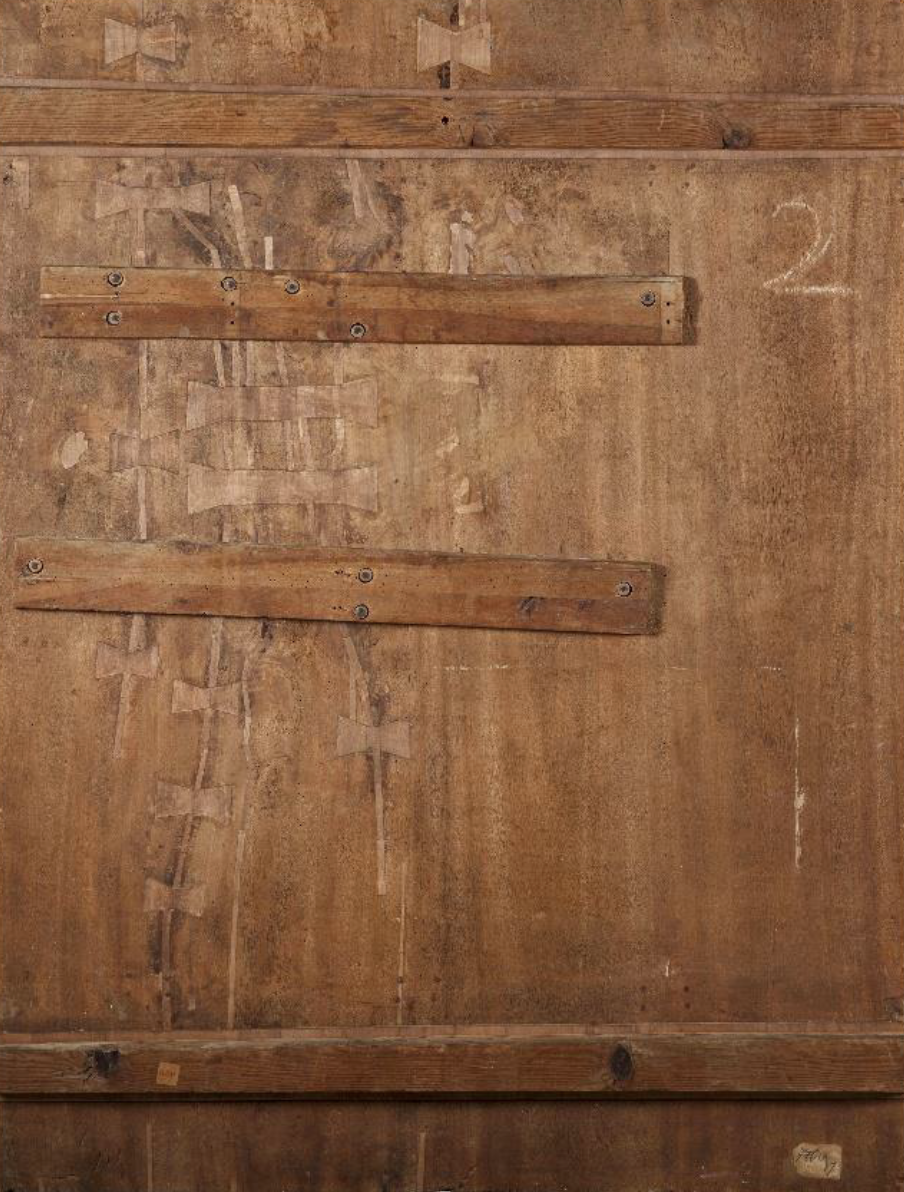
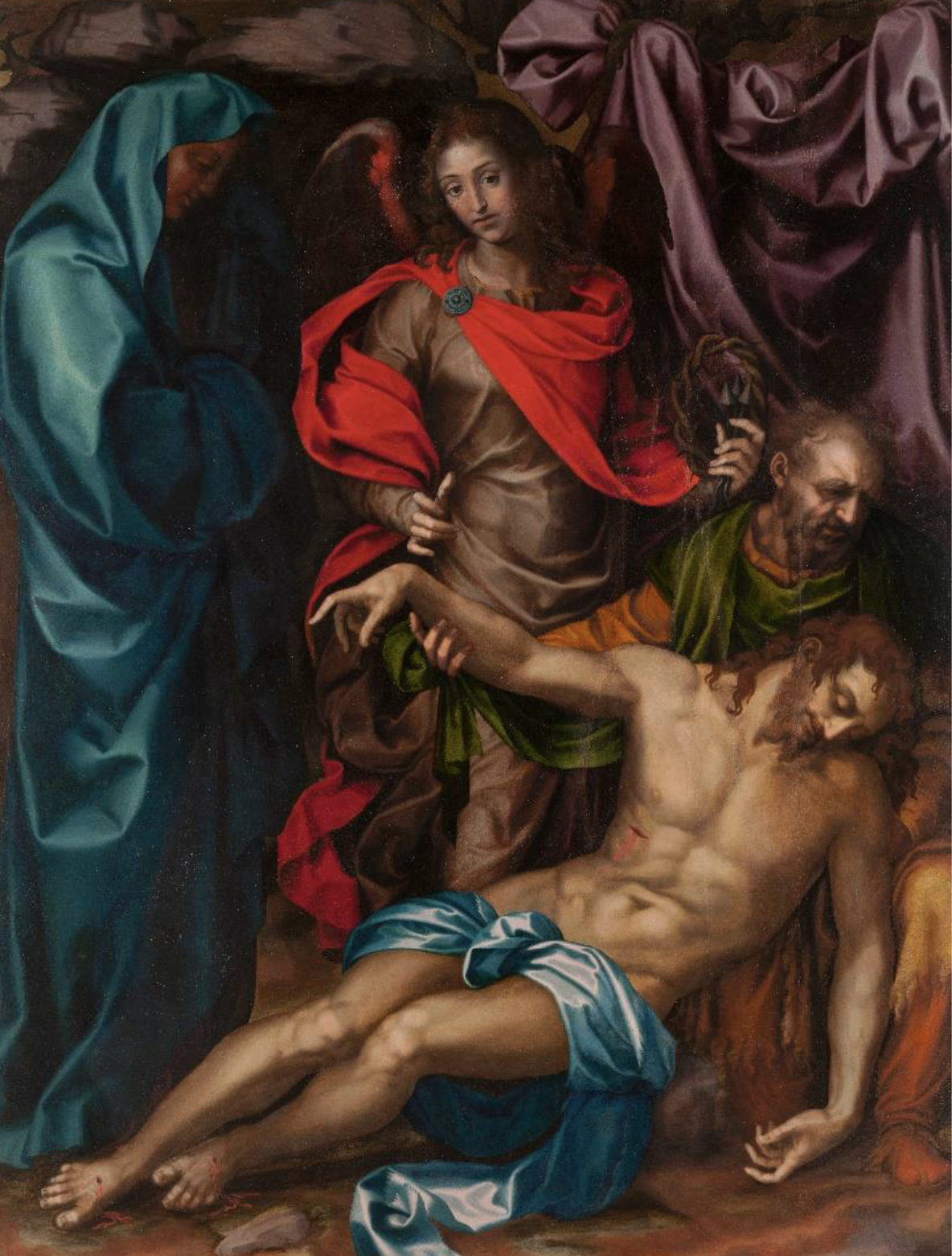
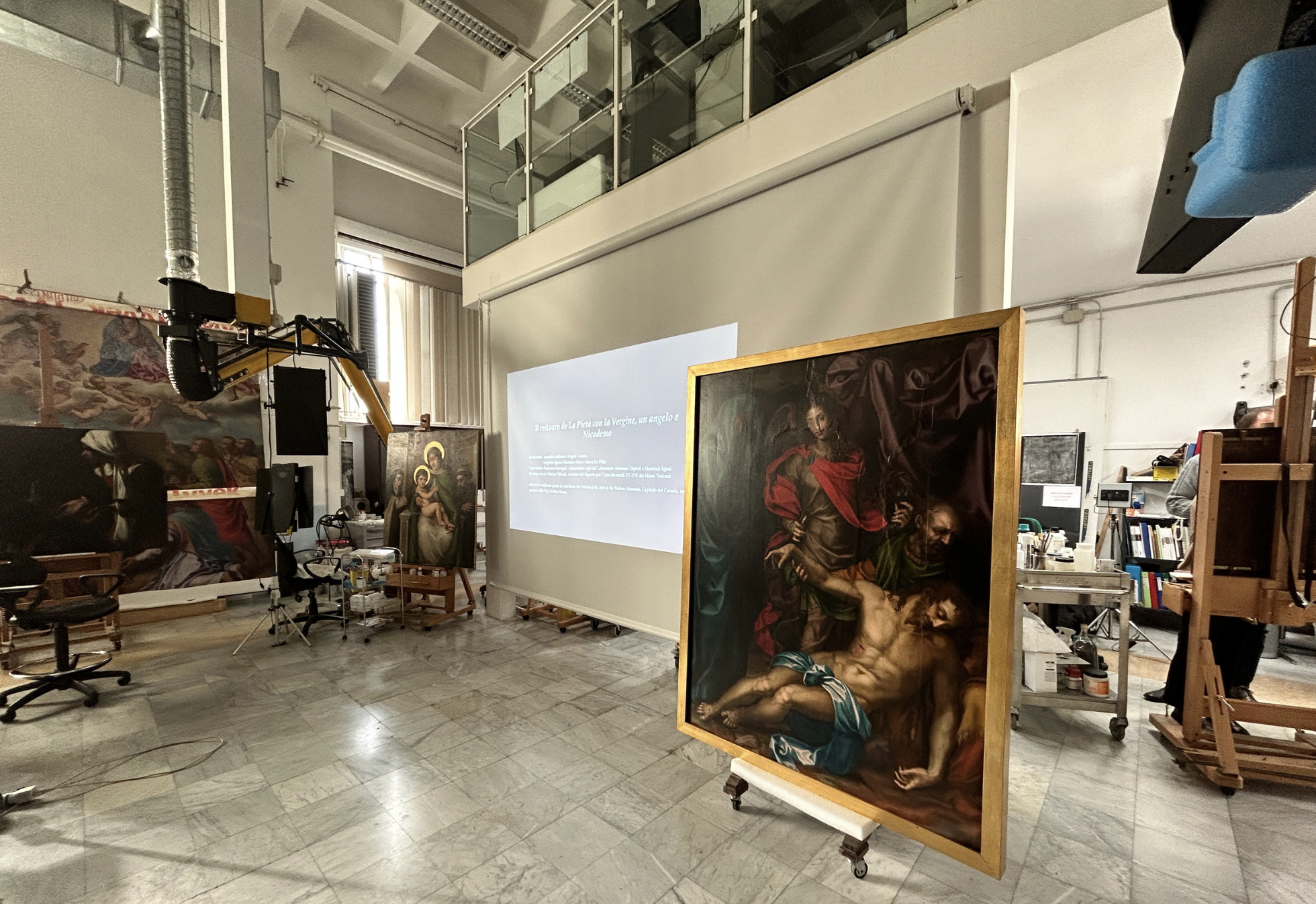
Restorations Update: Pietà with the Virgin Mary, an Angel, and Nicodemus - Second Restoration Update
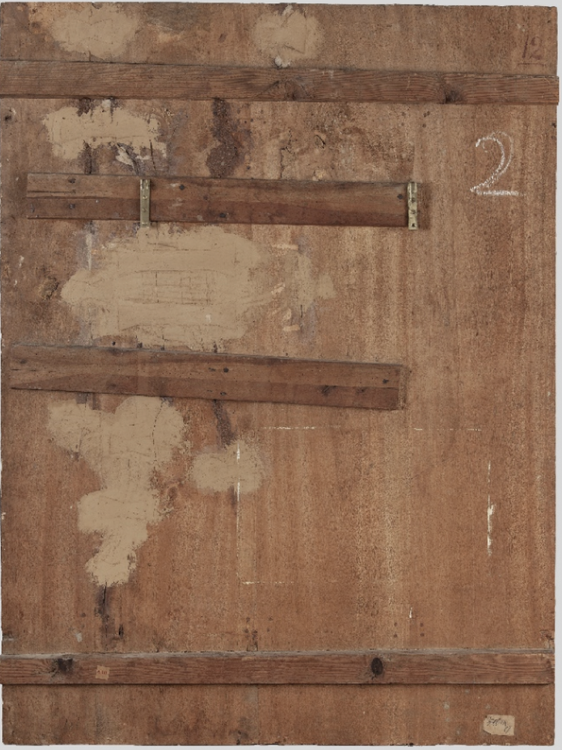
The pictorial board consists of four poplar wood planks with vertically running fibers, joined together by ranks inserted in the thickness and locked with four orthogonal pins.
The board has a dual containment system: at the top and bottom are two dovetailed spruce-wood crosspieces with a trapezoidal cross-section; on the other hand, in the central area of the painting, two poplar-wood crosspieces have been placed.
The latter containment system, probably previously shortened, currently acts only on the first three planks of the panel, leaving free the one furthest to the right (looking at the back of the painting).
Following a preventive anoxic woodworm treatment, the restoration intervention began removing the two dovetailed fir crossbeams. This operation preserved all the elements of the artwork, leaving the preparatory and pictorial layers in complete safety. Next, the layers of glue and sawdust, and stucco present, previously softened with water-based gel packs, were mechanically removed from the surface.
In the areas affected by cracks entirely through the thickness of the panel, characterized by clearly visible unevenness on the front, a delicate phase of realigning the pictorial surface followed, where permitted, acting from the back with a system of levers and constantly monitoring the movements on the front of the work; when the unevennesses have been zeroed or at least reduced to lock the board in its new position, Balsite® epoxy resin was inserted inside the cracks, proceeding with the gluing of wedge-shaped wooden inserts, of the same wood species and orientation as the wooden fibers of the support, thus reconstituting its unity and guaranteeing its movements. Restoration then extended to all cracks, knots, and gaps present.
The intention to conserve the constituent elements currently present, whether authentic or the result of later interventions now historicized, led to the design of an intervention to preserve the two containment systems, but at the same time re-functionalize them based on the conservation needs of the work. The containment system was strengthened by reinforcing the entire length of the channels with poplar corner inserts, which would reduce the risk of future cracking of the original wood caused by the possible contrast between the crossbeams and the movements of the support; in addition, the fir crossbeams themselves were stiffened by gluing multiple beech strips underneath, constituting the sliding portion in the seats.
In contrast, the core restraint system has been made more flexible, will fit concealed into the thickness of the crossbeams, and will have the dual function of constraining them to the artwork and more elastically contrasting the movements of the wood.
Restorers: Massimo Alesi, Marco De Pillis and intern Vincenzo Amato.
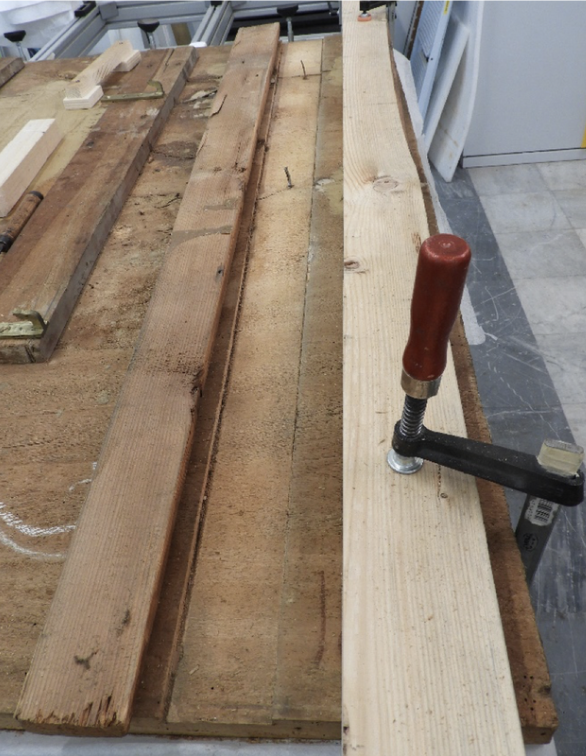
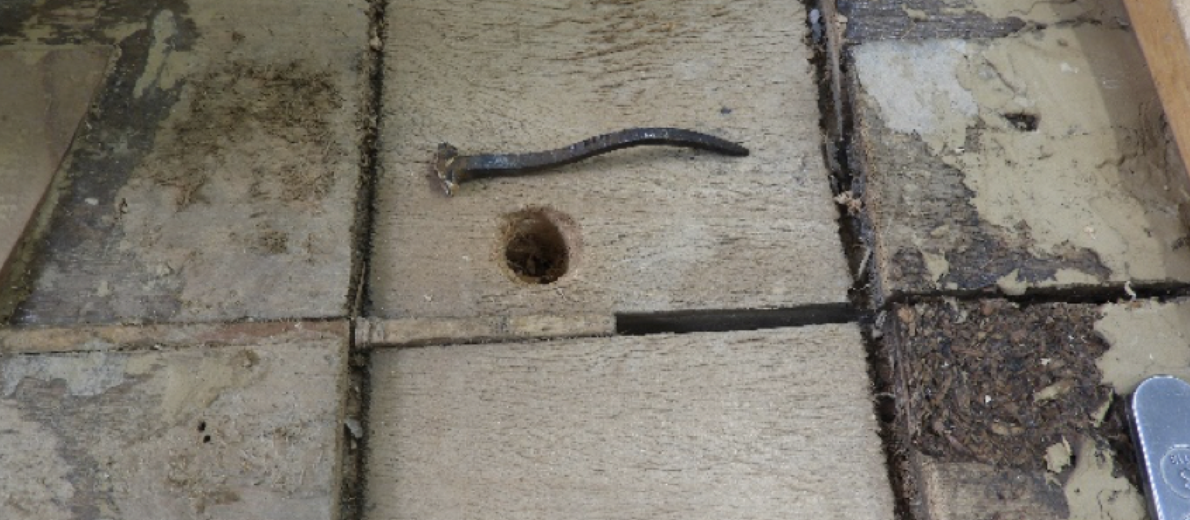

Restorations Update: Pietà with the Virgin Mary, an Angel, and Nicodemus - Restoration Update
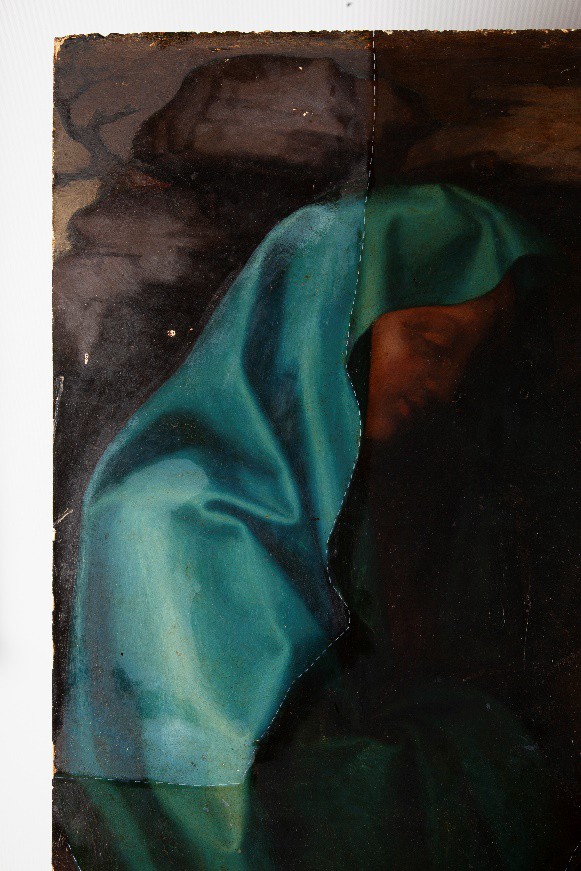
Executed Technique:
The panel consists of four poplar wood planks with vertical fibers. They are together with interlocking elements. There is a double system of crossbeams, some sliding and fixed, on the back. The oil painting technique is on a traditional chalk and glue preparation.
State of Preservation and Past Interventions:
The wood planks are in poor conservation condition. There are cracks, and plank deformation, which created unevenness in the preparatory and pictorial layers. Degradation factors contributed to this destruction. First, the constituent material appears to be of poor quality, given the numerous irregularities and knots, mainly located in the central area. In addition, the painting has two restraint systems that need to be adjusted.
The previous restoration work on the support had additional stiffness that conflicted with the natural movement of the wood. The initial width of the panel underwent a reduction on the entire right side and the lower part of the left side.
Previous restorations are also clearly evident on the surface. There were heavily oxidized and tenacious reintegrations and repainting under and over the varnish. The fillings, with the intention of smoothing out the unevenness created by the support, extended far beyond the underlying gaps.
Restoration Intervention:
Following a preventive anoxic biocide treatment, restorers cleaned the paint film. After removing the yellowed varnish with solvents, there were numerous tenacious repaintings, especially in the shaded parts. With the help of basic substances, restorers removed the invasive fillings. Also, the freed surface from foreign elements made it possible to clearly read the actual levels and damages created by the movement of the support. The double glaze of Japanese paper protected the front, which allowed the restorers to facilitate the intervention on the back.
On the support, restorers removed the two fir crosspieces in the upper part without affecting the pictorial surface. Next, they mechanically removed the layers of glue, sawdust, and stucco present, previously softened with the help of water-based gel packs. In addition, the restorers extracted the constraints constituted by the "butterflies" and inserts of previous workings to partially free the planking and allow a gradual realignment of the pictorial surface.
The intervention then continued with the remediation of the cracks by inserting wedges of the same original wood species, which ensured equal movements to those of the support. The restorers are considering the application of a suitable elastic restraint system.
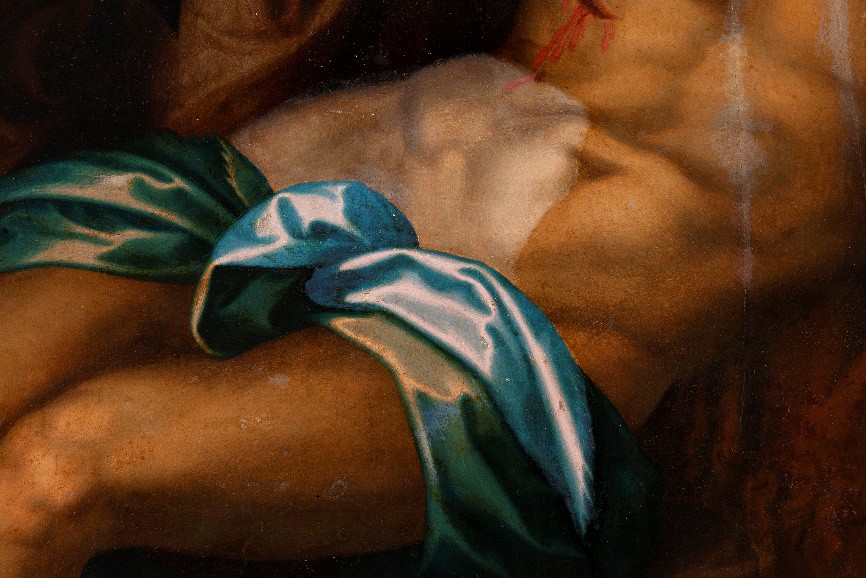
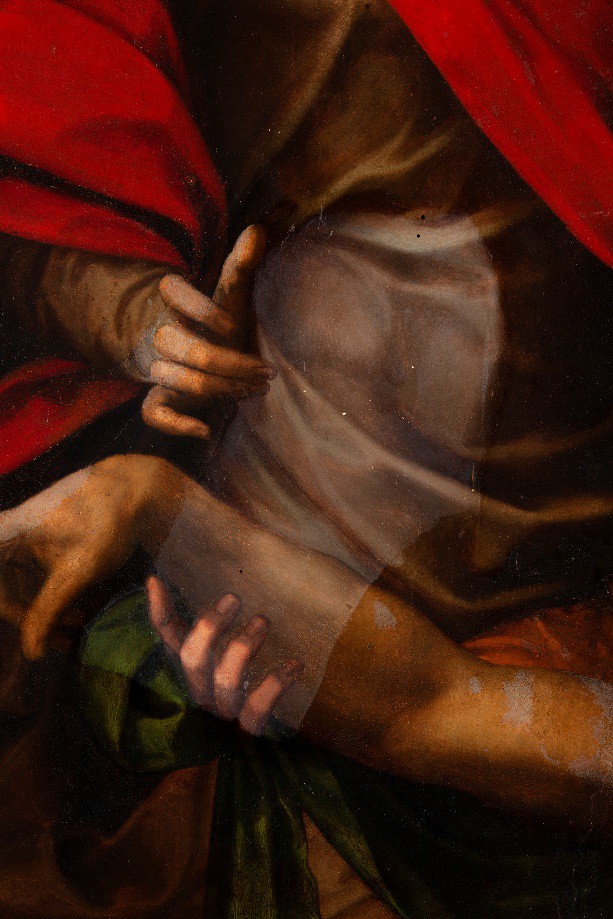

© 2025 Patrons of the Arts
in the Vatican Museums
Vatican Museums V-00120,
Vatican City State (Europe)
+39 0669864499
